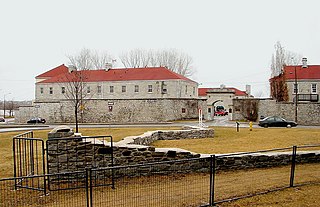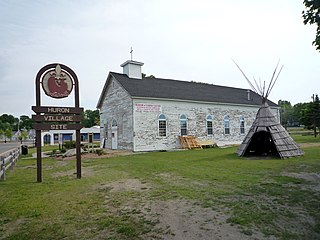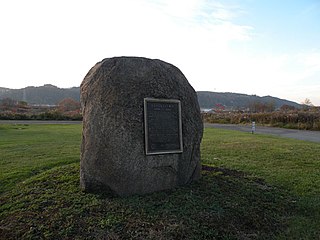Related Research Articles

France began colonizing the Americas in the 16th century and continued into the following centuries as it established a colonial empire in the Western Hemisphere. France established colonies in much of eastern North America, on several Caribbean islands, and in South America. Most colonies were developed to export products such as fish, rice, sugar, and furs.

René-Robert Cavelier, Sieur de La Salle, was a 17th-century French explorer and fur trader in North America. He explored the Great Lakes region of the United States and Canada, and the Mississippi River. He is best known for an early 1682 expedition in which he canoed the lower Mississippi River from the mouth of the Illinois River to the Gulf of Mexico; there, on 9 April 1682, he claimed the Mississippi River basin for France after giving it the name La Louisiane. One source states that "he acquired for France the most fertile half of the North American continent". A later ill-fated expedition to the Gulf coast of Mexico gave the United States a claim to Texas in the purchase of the Louisiana Territory from France in 1803. La Salle was assassinated in 1687 during that expedition.

Father Louis Hennepin, O.F.M. baptized Antoine, was a Belgian Roman Catholic priest and missionary of the Franciscan Recollet order and an explorer of the interior of North America.

Henri de Tonti, also spelled Henri de Tonty, was an Italian-born French military officer, explorer, and voyageur who assisted René-Robert Cavelier, Sieur de La Salle, with North American exploration and colonization from 1678 to 1686. de Tonti was one of the first explorers to navigate and sail the upper Great Lakes. He also sailed the Illinois and the Mississippi, to its mouth and thereupon claimed the length of the Mississippi for Louis XIV of France. De Tonti established the first permanent European settlement in the lower Mississippi valley, known as Poste de Arkansea, making him "The Father of Arkansas."

This section of the Timeline of Quebec history concerns the events between the foundation of Quebec and establishment of the Sovereign Council.
Daniel Greysolon, Sieur du Lhut was a French soldier and explorer who is the first European known to have visited the area where the city of Duluth, Minnesota, United States, is now located and the head of Lake Superior in Minnesota. His name is sometimes anglicized as "DuLuth", and he is the namesake of Duluth, Minnesota, as well as Duluth, Georgia. Daniel Greysolon signed himself "Dulhut" on surviving manuscripts.

Events from the 1680s in Canada.

Events from the year 1717 in Canada.

Fort Frontenac was a French trading post and military fort built in July 1673 at the mouth of the Cataraqui River where the St. Lawrence River leaves Lake Ontario, in a location traditionally known as Cataraqui. It is the present-day location of Kingston, Ontario, Canada. The original fort, a crude, wooden palisade structure, was called Fort Cataraqui but was later named for Louis de Buade de Frontenac, Governor of New France who was responsible for building the fort. It was abandoned and razed in 1689, then rebuilt in 1695.

Joseph-Antoine le Fèbvre, sieur de La Barre was a French lawyer and administrator best known for his disastrous three years as governor of the colony of New France (Quebec).

Jacques-René de Brisay de Denonville, Marquis de Denonville was Governor General of New France from 1685 to 1689 and was a key figure in the Beaver Wars.

Antoine Daniel was a French Jesuit missionary in North America, at Sainte-Marie among the Hurons, and one of the eight Canadian Martyrs.
Louis Armand, Baron de Lahontan (9 June 1666 – prior to 1716) served in the French military in Canada where he traveled extensively in the Wisconsin and Minnesota region and the upper Mississippi Valley. Upon his return to Europe he wrote an enormously popular travelogue. In it he recounted his voyage up the "Long River," now thought to be the Missouri. He wrote at length and in very positive terms about Native American culture, portraying Indian people as free, rational, and generally admirable.

Fort de Buade was a French fort in the present U.S. state of Michigan's Upper Peninsula across the Straits of Mackinac from the northern tip of lower Michigan's "mitten". It was garrisoned between 1683 and 1701. The city of St. Ignace developed at the site, which also had the historic St. Ignace Mission founded by Jesuits. The fort was named after New France's governor at the time, Louis de Buade de Frontenac.

The riverside village of Logstown also known as Logg's Town, French: Chiningue near modern-day Baden, Pennsylvania, was a significant Native American settlement in Western Pennsylvania and the site of the 1752 signing of the Treaty of Logstown between the Ohio Company, the Colony of Virginia, and the Six Nations, which occupied the region. Being an unusually large settlement, and because of its strategic location in the Ohio Country, an area contested by France and England, Logstown was an important community for all parties living along the Ohio and tributary rivers. Logstown was a prominent trade and council site for the contending British and French colonial governments, both of which made abortive plans to construct forts near the town. Logstown was burned in 1754 and although it was rebuilt, in the years following the French and Indian War it became depopulated and was eventually abandoned.

Charles le Moyne de Longueuil et de Châteauguay, was a French officer and merchant who was a prominent figure in the early days of Montreal. Born in Dieppe, France in Normandy, he came to New France in 1641. He became lord of Longueuil in Canada.

Fort Crevecoeur was the first public building erected by Europeans within the boundaries of the modern state of Illinois and the first fort built in the West by the French. It was founded on the east bank of the Illinois River, in the Illinois Country near the present site of Creve Coeur, a suburb of Peoria, Illinois, in January 1680. It was destroyed on 16 April of that same year by members of La Salle's expedition, who mutinied and abandoned it, fearful of being attacked by the Iroquois League as the Beaver Wars extended into the area.
New Voyages to North America is a book by Louis Armand de Lom d’Arce, baron de Lahontan that chronicles his nine years exploring New France as a soldier in the French Army. Published in two volumes in 1703 as Nouveaux Voyages de M. le Baron de Lahontan dans l’Amérique Septentrionale, it was translated into English the same year.
Events from the year 1710 in France.
Louis-Thomas Chabert de Joncaire, also known as Sononchiez by the Iroquois, was a French army officer and interpreter for New France who worked with the Iroquois tribes during the French and Indian Wars in the early 18th century. He helped negotiate the Great Peace of Montreal in 1701 and founded Fort Niagara in 1720.
References
- ↑ Louise Phelps Kellogg, ed. (1917). Early Narratives of the Northwest, 1634–1699, Volume 19. C. Scribners's Sons. pp. 309, 327.
- ↑ d'Eschambaul, Antoine (December 1951). "La Vie Aventureuse de Daniel Greysolon, Sieur Dulhut". Revue d'histoire de l'Amérique française. 5 (3): 320–339. doi: 10.7202/801714ar .
- ↑ Armand, Louis (1905). Reuben Gold Thwaites (ed.). New Voyages to North-America, Volume 1. A. C. McClurg. pp. xxii–xxiii.